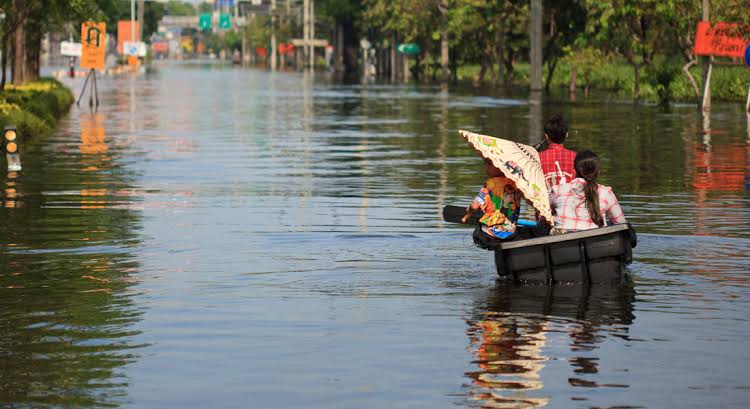In response to the increasing frequency and severity of natural and human-made disasters, Canada has adopted a bold new approach to disaster management as of July 2025. This revamped strategy reflects lessons learned from past emergencies, including the COVID-19 pandemic, widespread wildfires, floods, and cyberattacks. It aims to build resilience at every level of government and society while placing a strong emphasis on preparedness, real-time response, and long-term recovery.
Unlike previous models that relied heavily on post-disaster reaction, Canada’s new disaster management framework emphasizes prevention, community engagement, climate readiness, and technology integration. This proactive, inclusive, and adaptive model is seen as a necessary evolution in light of the country’s geographic diversity, changing climate, and complex societal challenges.
Emphasizing Climate Resilience and Risk Reduction
One of the core priorities of Canada’s updated disaster management strategy is addressing climate-related risks. Wildfires in Alberta, heatwaves in British Columbia, and rising flood threats in Ontario and Quebec have highlighted the urgency of integrating climate science into emergency planning.
To that end, the federal government has invested in advanced hazard mapping, which uses satellite imaging and AI-based modeling to predict areas at high risk of fires, floods, and storms. This data is shared across provinces and municipalities, allowing them to design early warning systems and tailor infrastructure to withstand environmental stress.
Additionally, the National Adaptation Strategy has been aligned with disaster planning, encouraging climate-resilient building codes, green urban planning, and environmental restoration projects that naturally buffer communities from hazards like floods and landslides.
A Unified and Coordinated Response Framework
One of the major criticisms of Canada’s previous disaster management approach was fragmentation across jurisdictions. Provinces, territories, and municipalities often acted independently, leading to duplicated efforts and communication breakdowns. The new strategy has introduced a unified command structure called the Canadian Emergency Coordination Framework (CECF), which enables integrated response operations across all levels of government.
CECF standardizes protocols for mobilizing first responders, deploying military assistance, and activating public health resources. Each province now hosts a Regional Emergency Coordination Center (RECC) that works in real-time with federal counterparts in Ottawa. This ensures that resources are allocated quickly and based on verified, dynamic assessments of need.
Moreover, regular interagency simulations and joint training exercises have been mandated to keep coordination sharp and test readiness across multiple scenarios.
Investing in Technology and Real-Time Data Systems
A major innovation in Canada’s new disaster strategy is the expanded use of technology to improve detection, communication, and decision-making. The Canadian Disaster Intelligence Network (CDIN), launched earlier in 2025, aggregates data from weather services, environmental sensors, and geospatial monitoring systems to provide authorities with real-time alerts.
Communities now receive geo-targeted emergency notifications on their mobile devices, alerting them of evacuations, shelter locations, or potential hazards. AI-driven tools also assist emergency managers in predicting how disasters might unfold, allowing for better pre-deployment of rescue units and supply stockpiles.
Additionally, Canada’s cybersecurity agencies have joined the disaster management network to ensure resilience against cyberattacks, especially on critical infrastructure like healthcare systems and utilities.
Strengthening Community-Based Preparedness
Canada’s 2025 strategy acknowledges that effective disaster management starts at the community level. Local governments and grassroots organizations have been empowered to create tailored emergency response plans with support from federal funding.
The new Community Resilience Grant Program provides resources for local initiatives such as volunteer training, community shelters, emergency supplies, and neighborhood communication plans. Emphasis is placed on engaging Indigenous communities, who bring valuable traditional knowledge in land stewardship and disaster mitigation, especially in remote and environmentally sensitive areas.
Furthermore, public awareness campaigns have been updated and expanded. Schools, workplaces, and households are now part of a national education effort known as “Ready Canada,” which promotes practical preparedness actions like building emergency kits, understanding evacuation routes, and recognizing early signs of hazard escalation.
Supporting Vulnerable and At-Risk Populations
A major breakthrough in Canada’s new disaster strategy is its focus on equity and inclusion. Past crises revealed that vulnerable populations—seniors, persons with disabilities, low-income families, newcomers, and Indigenous peoples—often face disproportionate risks and slower recovery.
To address this, the government introduced the Inclusive Emergency Response Protocol (IERP). This protocol requires every emergency plan to include provisions for accessible transportation, interpretation services, culturally appropriate assistance, and pre-identified outreach mechanisms to connect with those at higher risk.
Emergency shelters are now equipped with barrier-free access, dietary accommodations, and privacy zones for families and individuals facing trauma. Local aid centers are mandated to partner with culturally diverse organizations to ensure recovery efforts are both efficient and compassionate.
Post-Disaster Recovery and Mental Health Support
Beyond the immediate aftermath of a disaster, recovery can take months or even years. Recognizing this, the 2025 disaster strategy places greater emphasis on long-term recovery and psychological well-being.
A newly created federal agency, the National Recovery and Resilience Office (NRRO), is tasked with coordinating support for rebuilding homes, restoring businesses, and revitalizing affected communities. Funding mechanisms like the Disaster Recovery Assistance Fund have been expanded to offer quicker disbursements to individuals, farmers, and small enterprises.
Mental health has also been integrated into disaster response. Mobile psychological support units now accompany first responders during major incidents. Survivors and first responders alike are offered post-trauma counseling and long-term follow-up services to prevent chronic stress disorders.
Conclusion
Canada’s new approach to disaster management in 2025 reflects a significant evolution in how the country prepares for, responds to, and recovers from emergencies. It is built on collaboration, technology, climate readiness, and inclusivity, ensuring that all Canadians—regardless of where they live or their circumstances—are better protected in times of crisis.
By addressing gaps in coordination, integrating real-time intelligence, and empowering communities, Canada is setting a new global benchmark for disaster resilience. As the climate crisis and global risks intensify, such an approach offers not just protection, but a pathway to a more secure, prepared, and united future.



